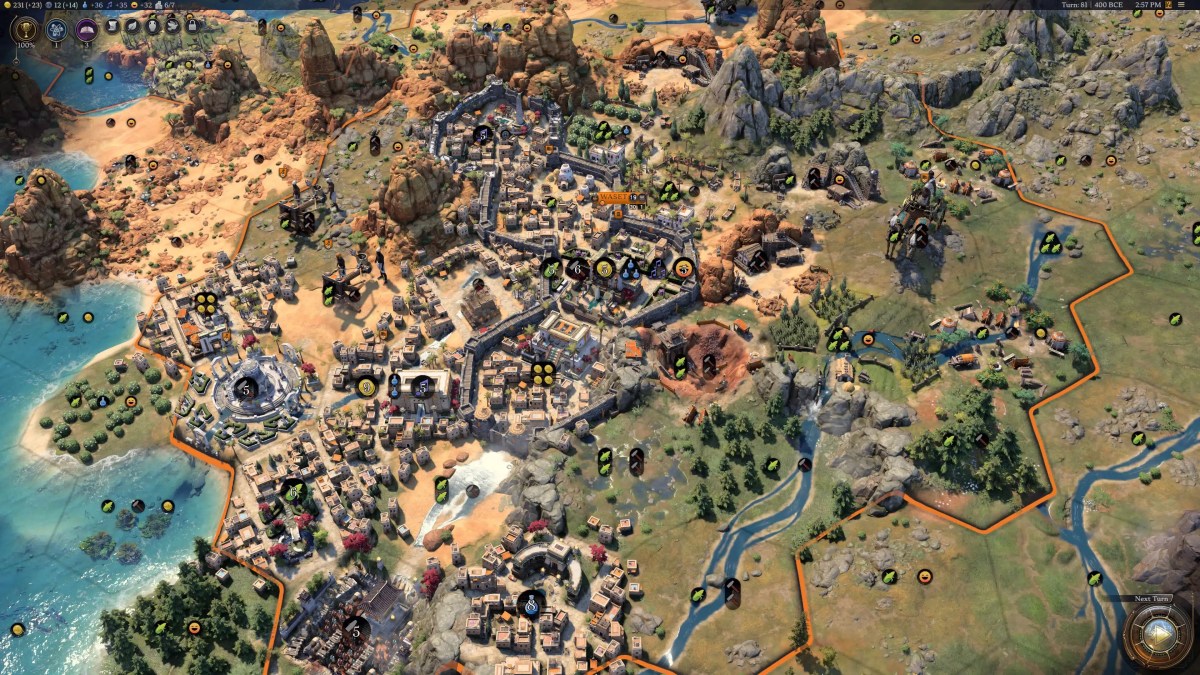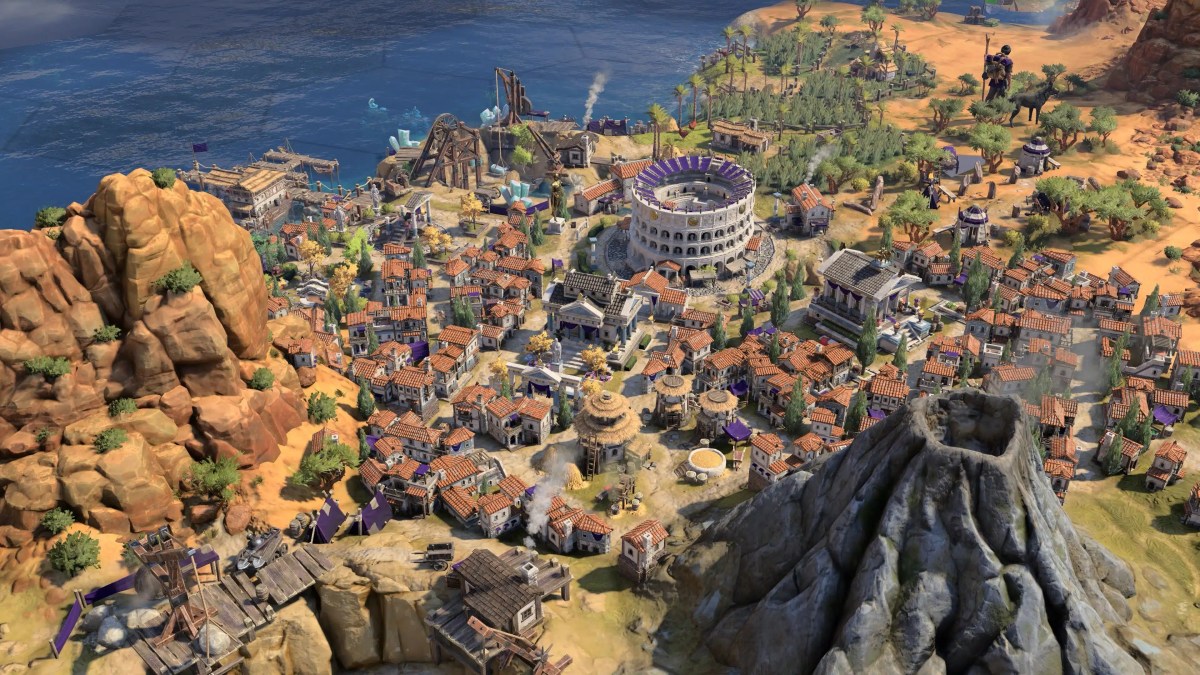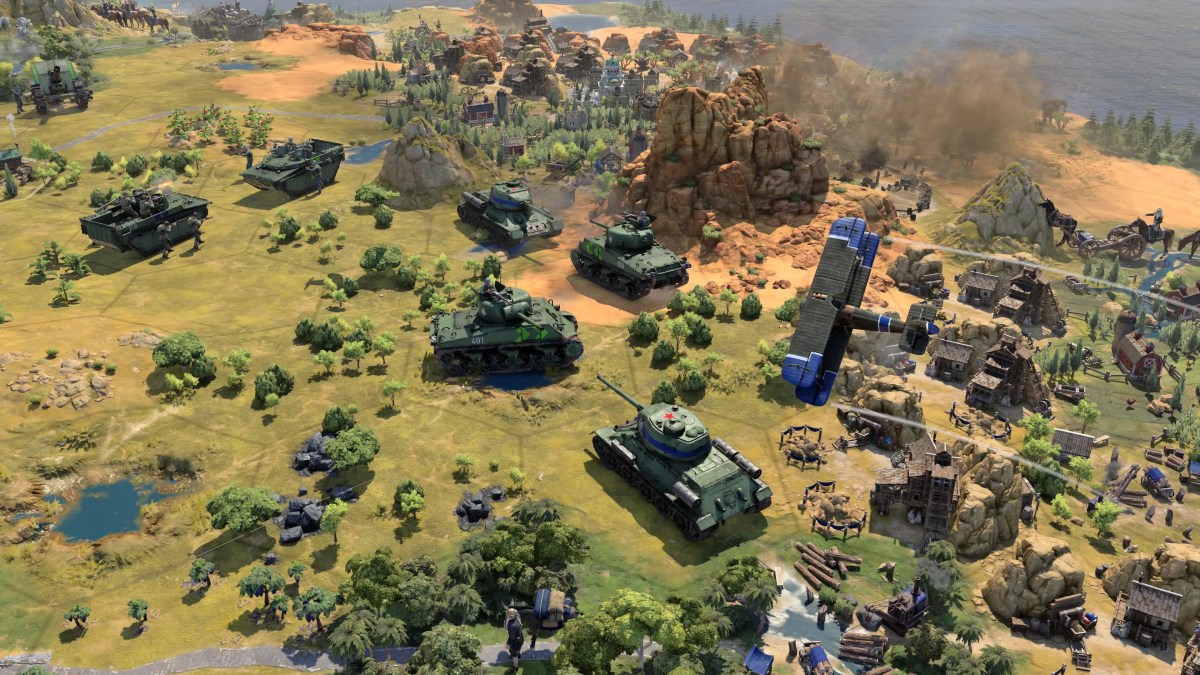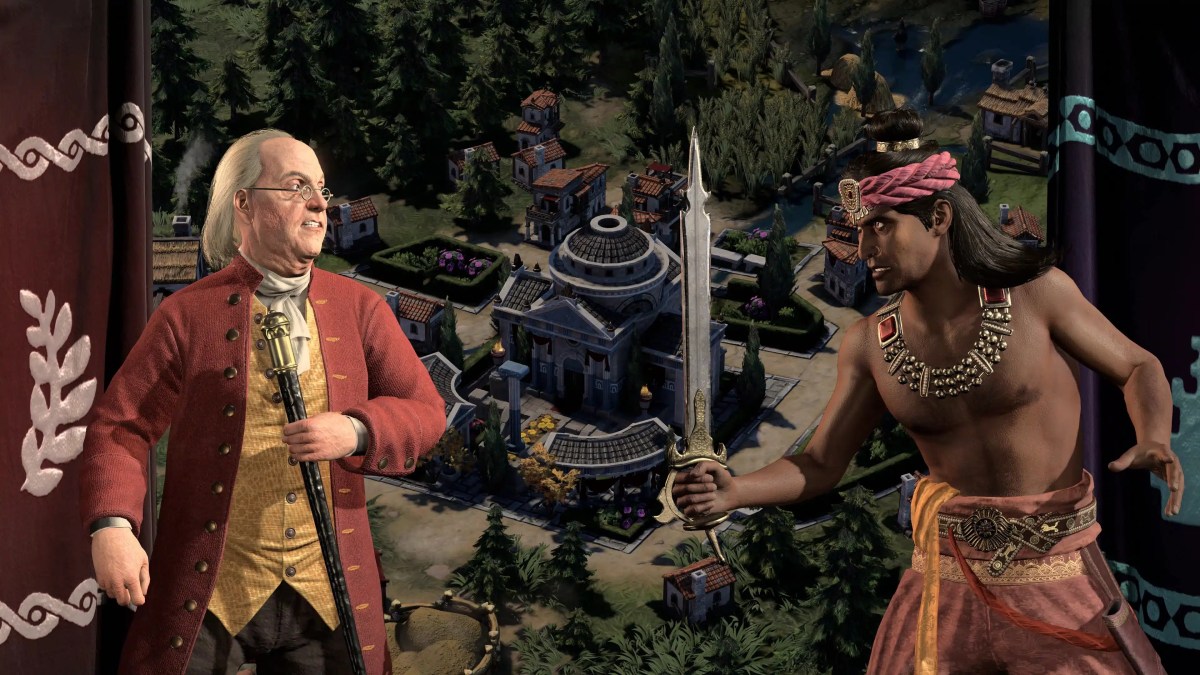Earlier this month, GamesHub had the privilege of being invited to visit strategy game makers Firaxis, nestled a short drive north of the U.S. city of Baltimore. While there, we got to take a hands-on preview with the eagerly awaited Sid Meier’s Civilization VII, and talk to the Civilization team’s executive producer Dennis Shirk, and game designer Carl Harrison.
After having spent almost three hours playing the new installment, and having been a massive fan of the franchise for almost 30 years, I walked away tremendously impressed by how the team has worked to construct the freshest Civilization sequel yet.
Our day kicked off with a presentation by Civilization VII’s lead designer Ed Beach, who described the core of what he feels makes Civ what it is; strategic depth, historical immersion, and emergent narrative potentials. Beach spoke of how he wished to better evoke a sense of mankind’s evolutionary history by capturing how real-world civilizations are built upon the foundations, or ashes, of prior ones.
He used London as an example, where native tribes along the Thames were eventually driven out by the Romans who founded the city, which was then taken over by the Saxons following Rome’s fall, and who were largely responsible for evolving the city into what we now know it as today.
Civ VII realizes this by splitting up a game into three distinct ‘ages’; Antiquity, Exploration, and Modern. When starting a new game, you’re only allowed to choose a civilization that belonged to the real-world antiquity era.
When you or one of your opponents hit the next age, everyone in the game has to choose a new civilization appropriate to it, with the offered choices being a combination of what logically came next after your starting civilization’s real-world decline, as well as ones based upon how you personally played in the previous age.
To maintain some consistency and lessen confusion amidst age transitions, leaders and civilizations are now fully decoupled, and your leader persists all the way through to the game’s end. Leaders and civs also each possess their own unique abilities, as well as technologies, units, buildings, and civic trees.
This time around, Firaxis didn’t want to limit themselves to just historical figures who directly led nations, which opens the doors up to some delightfully weird combinations.
“We always have that recommended path,” says Shirk. “Once you’ve mastered Hatshepsut Egypt though, you can be like ‘Hatshepsut Rome’, and suddenly you have a (mechanically) different pairing.”

Read: Gamescom 2024: What to expect from Opening Night Live
The preview build featured only four leaders and their matching civs, and no word was given as to how many of each will be included in the final game. Given Australia’s appearance as a playable civ in the prior game, I naturally had to ask if we’re coming back again this time around.
“We’re not talking about any expanded Civs yet,” Shirk answers. “You’ll have to wait for that one.”
Each age also features unique science, military, economic, and cultural ‘legacy paths’. Hitting milestones in each will unlock relevant bonuses for the subsequent age, but you’re free to completely shift the trajectory of your empire and ignore your foundations.
You can pursue multiple paths simultaneously, or ignore them all entirely. Age progress increases a small amount each turn, but hitting milestones advances it much faster – as does researching techs and civics, and defeating other leaders.
As military units are age-specific, Civilization VII will inevitably feature a bit less of the series’ infamous war wackiness where medieval crossbowmen end up battling modern-day tanks and the like, but a Firaxis team member assured me that there can still be a wide spectrum of military tech within a given age though as they ‘didn’t want to take all of the fun out of it.’
The 33% Rule
Civilization creator and Firaxis co-founder Sid Meier has long had a rule when doing sequels. He believes that 33% of it should be brand new, 33% should be old elements improved or expanded upon, and 33% should remain exactly as it was previously so as to not totally alienate the fans. It’s a framework that has served the team at Firaxis well, and is plainly reflected in Civilization VII within just the first few turns.
“It’s the biggest challenge that we have,” says Shirk. “It’d be very easy to just keep changing and iterating, and all of a sudden it’s not Civ. We always have to keep our eye to that foundation, that first block layer at the bottom of the pyramid. Fundamentally, is this still Civ? Does that core game loop still feel like Civ? If the answer ever veers into ‘uh, not so much’, then we’ve made a mistake and we have to go down a different path.”
Harrison added, “I think a really good example of that is the natural disasters. It was great in [Civ VI expansion] Gathering Storm and we’ve kept it here. There are minor tweaks to various elements of how it works but the core is still very much the same, and that’s because it was already successful.”

So what’s new in Civ VII then?
The ages system may be the most wildly new feature, with Beach even labelling it as Civilization VII’s signature one, but the way that expansion and development of your empire now works has also evolved significantly.
Firstly, builders are gone. Now when the cultural borders of your empire expand into a new hex, you get to simply choose what improvement is placed upon it for free. Secondly, newly settled cities aren’t cities, they’re towns. In the most broad sense they’re the same thing – each grows using the food yield as well as being developed with buildings and creating units. In practice they function quite differently, though.
Towns accumulate gold at a much higher rate than cities are capable of, but all buildings and units they produce have to be purchased using gold. Towns can also be given a ‘focus’ to produce increased yields but they remain locked into that focus for the rest of the age. A focused town also stops growing and sends all food in its region to any cities it’s connected to.
Another of the more significant changes to empire management is how resources function. Most must now be manually assigned to a city or town, and only grant their effect locally, though some function empire-wide.
“Resources aren’t just strategic and luxury or bonus (anymore), they actually do something,” says Shirk. “Knowing that each one of these means something makes trade more subtly important. I’m not getting a trade route just to earn gobs of gold like I have in the past, I’m doing so because I need that thing, that piece of my game.”
Building your narrative epic
Instead of being a balancing act of trade agreements, Civilization VII now centres upon a much more narrative-feeling diplomatic negotiation system, using influence points as its backbone. Want to suggest a juicy agreement, or accept the offer of one from another leader? That will cost more than an average deal will.
Beach explained that the team really wanted to focus on these narrative potentials for Civ VII. Though the very nature of Civilization in its standard play format has always naturally led to emergent storytelling, as empires rise and fall alongside – and sometimes directly because of – one another, Civilization VII really boosts it all.
Barbarian spawns are no longer a binary split between hostile entities or peaceful ones that give random gifts when a unit enters their space. Instead, moving a unit into a camp presents the player with a short bit of flavor text describing a moral quandary with two choices you can make.
The coolest part of this system though is that in many cases the ramifications are kept a mystery until at least a turn later. Choices have consequences.

Competing with yourself
By the time it launches in early 2025, Civilization VII will have spent over five years in development, while Civilization VI still boasts an enormous player base eight years on from its release.
“You need a lot of simmer time with a game like Civ, especially with this one,” said Shirk. “There’s potentially billions of combinations of gameplay, and the idea of rushing through this or just getting it to market means that you’re going to have some really strange unbalanced combinations. Just giving Civ the time it needs to breathe as you’re going through the iteration process is so critical.”
Fortunately, that time to breathe appears to have paid off. Though only an alpha build limited to the starting antiquity age, what I got to play of Civilization VII felt remarkably polished. Will it hold up to the legacy of its predecessor? Time will tell.
“There is nothing stranger than your two previous games being your biggest competitor,” said Shirk. “Civ VI took us about a year to overtake our Civ V numbers on Steam, and we’re (inevitably) gonna have the same thing (with Civ VII).”
“I think that’s the other reason why Ed wanted to lean into a new experience. Not just an evolution, but a revolution.”
Sid Meier’s Civilization VII is set to launch on PC, Mac, Linux, Switch, PlayStation 4, PlayStation 5, Xbox One, and Xbox Series X/S on February 11th 2025 with five days early access included with purchase of the Deluxe and Founders editions. Stay tuned for more on the game closer to launch.
2K Games provided flights & accommodation to GamesHub in order to play Sid Meier’s Civilization VII and interview developers. 2K Games did not have oversight of this article.





